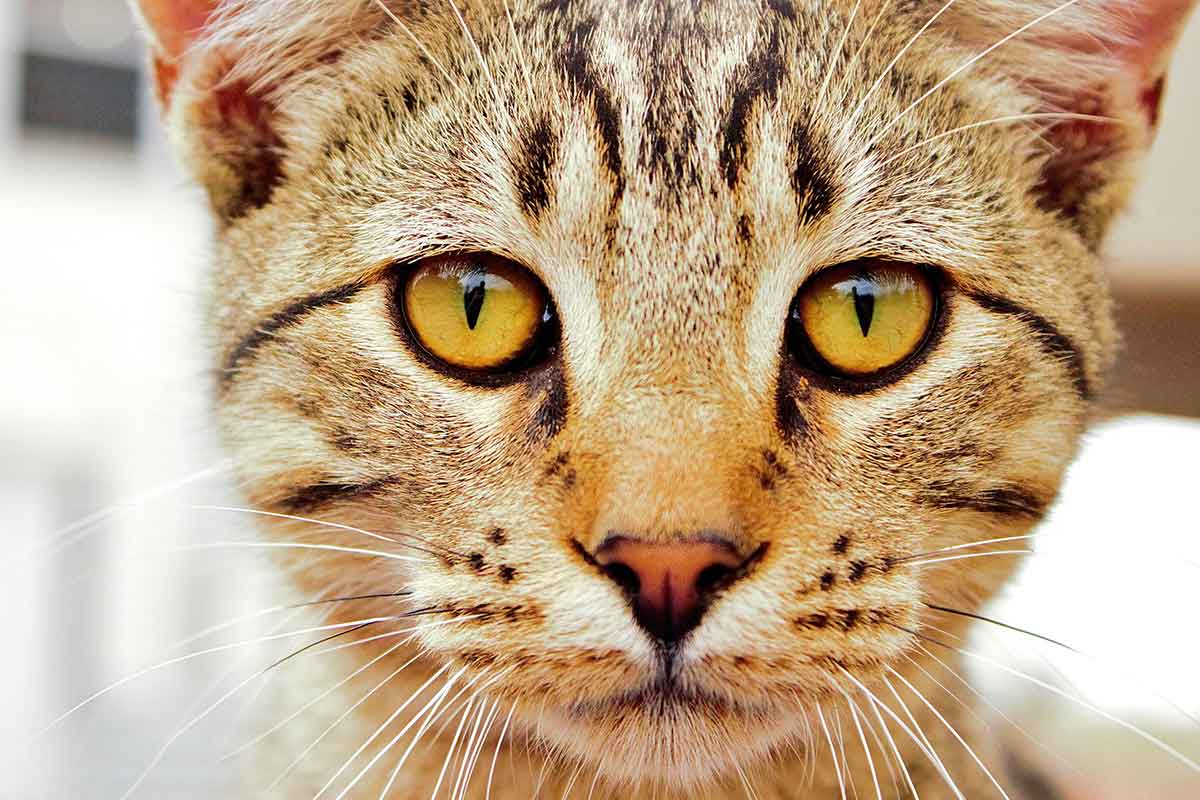We’ve heard it before–cats are not small dogs. They differ in nutritional requirements, training techniques, and body language. People often find feline communication more difficult to interpret than that of dogs because it can be so subtle that nonverbal communication cues are completely missed or misinterpreted. Misreading a cat can land us on the wrong end of sharp claws and teeth.
Learning to interpret understated feline body language enables us to avert calamity and strengthen our bond. Cats have a refined way of communicating between themselves and humans using primarily their body, tail, and facial features. Each blink, twitch, and flick communicates a meaning ranging from “I’m okay, you’re okay,” to “Back off, buster!” to “Affectionately, yours.”
Among the most expressive parts of the feline body are the orbs of vision. Let’s decipher the emotions hidden in the windows of the soul, the eyes.
Mesmer-eyes
Whether they are blue, green, or gold, round, oval, or almond-shaped, your cat’s eyes communicate emotions through physiological changes in pupil size and eyelid position. A cat’s pupils can shrink to the narrowest of slits or widen into black pools. Eyelids may be fully open, partially closed, or drawn into a squint.
Causes for these changes may be emotional arousal, such as fear, aggression, pleasure, or excitement, or environmental, such as a change in ambient light levels. Think of it like a silent movie: the autonomic nervous system is the director, the pupil plays the lead role, the eyelid is a supporting character, while other facial features, body, and tail comprise the remaining cast. The surrounding environment sets the stage.
Eyes Wide Open
Alert, wide-open eyes signal trust. In friendly greetings, pupils are at normal dilation. The eyelids may be squinty, brows are soft, and the cat may offer cheek rubs. Accept this as a sign of love and trust.
Unblinking Stare
When a cat starts to show interest, the eyes look more directly with an unblinking stare at the object, person, or animal of interest, and the pupils dilate slightly. The general message is “I know you’re there and I don’t want a fight.” But the unblinking stare is also a communication megaphone for wanna-be aggressive cats to adversaries. This is an important control message in multi-cat households with limited resources such as food, water, litter box, toys, and territory. People often miss the cue because of the subtlety.
Direct Stare
A direct stare in feline parlance is threatening and confrontational. An offensively aggressive cat’s pupils may be slits or dilated. Squinty eyelids protect the eyes from potential injury. In defensive aggression, pupils are dilated and brow furrowed. Avoid interacting with this cat. If you’re not familiar with a particular cat, avoid risk of injury by not making direct eye contact.
Pain
Cats wear a poker face when it comes to pain, but the eyes can be the tell for pain in the body or the eyes themselves. When a cat is experiencing body pain, pupils are dilated. A cat experiencing eye pain may have pupils that are dilated or constricted, depending on the injury or underlying disease. Squinting also indicates pain in the body or eye. Bloodshot eyes may also signal pain.
Slow Eye Blinks
Aww, lovey-dovey kitty kisses. Slow eye blinks express love and trust. The eyes, lids partially closed, have a sleepy, dreamy appearance, as if cats are in a state of bliss. Should you be the lucky recipient of a slow blink, return the show of affection with a reciprocal slow blink to share the love.
Feline body language is often subtle, confusing, and at times, contradictory. Since our cats cannot verbally express their feelings to us we must become savvy to their body language, consider the context of the surroundings, and recognize each individual’s quirks.
This article was reviewed/edited by board-certified veterinary behaviorist Dr. Kenneth Martin and/or veterinary technician specialist in behavior Debbie Martin, LVT.








